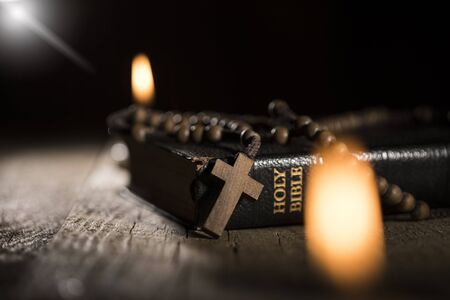Introduction to Death in British Folklore
Within the misty landscapes and ancient woodlands of Britain, tales of death have lingered for centuries, woven into the very fabric of folklore. These stories, passed down through generations, offer more than just cautionary warnings—they reveal profound insights into how communities once understood mortality, the afterlife, and the transition between worlds. Across England, Scotland, Wales, and Ireland, certain motifs and archetypes consistently emerge: spectral figures like the Grim Reaper or Ankou, mysterious black dogs haunting crossroads at midnight, and ethereal banshees whose mournful cries foretell an impending loss. Rooted deeply in Celtic, Anglo-Saxon, and Norse traditions, these legends reflect a blend of pagan beliefs and Christian reinterpretations. The symbolism of crossing rivers or thresholds often marks the journey from life to death—a motif mirrored in both rural superstitions and grand literary epics. By examining these recurring symbols and their origins, we begin to understand not only how our ancestors perceived death but also how these age-old myths continue to shape our collective dreams and anxieties about the end of life.
2. Personifications and Portents: The Figures of Death
Within the rich tapestry of British folklore, death is seldom an abstract concept. Instead, it takes on vivid, often unsettling forms that inhabit our stories and, consequently, our dreams. These personifications—such as the Grim Reaper, the Headless Horseman, and spectral hounds—are not mere figments of imagination but deeply embedded symbols reflecting the nation’s enduring relationship with mortality.
The Grim Reaper: Cloaked in British Lore
The image of the Grim Reaper—a hooded figure wielding a scythe—has its roots in medieval Europe but has become firmly ingrained in British cultural consciousness. This spectral harvester does more than signal the end; he marks the boundary between worlds, an impartial guide rather than a malevolent force. For many across Britain, dreams of this shadowy figure often evoke a sense of inevitability and transition rather than outright fear.
Headless Horsemen: Harbingers of Fate
The Headless Horseman gallops through British legend as a portent of doom. Whether associated with Dullahan tales from Irish tradition or adapted into local English ghost stories, this apparition is said to appear before impending tragedy or death. In dreams, the headless rider can symbolise unstoppable change or unfinished business, echoing collective anxieties about mortality and justice unresolved.
Spectral Hounds: Omens on the Moors
Spectral hounds—the likes of Black Shuck or Barghest—are legendary across England’s windswept moors and coastal paths. Their appearance is traditionally seen as an omen of death or misfortune. In the dreaming mind, these ghostly canines often embody primal fears and serve as warnings from the subconscious, linking personal anxiety with ancient superstition.
Folkloric Figures and Their Dream Symbolism
| Folkloric Figure | Traditional Role | Dream Interpretation |
|---|---|---|
| Grim Reaper | Guide to the afterlife | Inevitable transition; acceptance of endings |
| Headless Horseman | Harbinger of doom | Unresolved matters; fear of consequences |
| Spectral Hounds | Omen of death/misfortune | Ancestral warning; deep-seated anxiety |
Cultural Echoes in Modern Dreams
These folkloric figures continue to haunt not just rural legends but also the modern British psyche, making appearances in literature, film, and even our nightly visions. Their enduring imagery shapes how we perceive mortality—casting death not only as an end but also as a passage watched over by familiar yet formidable guardians. Thus, when we dream of these ancient portents, we participate in a uniquely British tradition: wrestling with fate through the lens of shared myth.

3. Dreams as Portals: How Folklore Shapes Our Night Visions
Throughout the British Isles, the boundary between waking life and dreams has long been regarded as a place of mystery—a threshold where the echoes of ancient stories and superstitions gently shape our subconscious wanderings. In many traditional British tales, dreams are not simply idle fancies but are perceived as portals, gateways through which the living may glimpse the world beyond and commune with those who have crossed over. This age-old belief continues to linger in the collective imagination, guiding both how we dream of death and what meanings we draw from those visions.
The stories passed down from generation to generation—whether whispered by the fireside or spoken softly in childhood bedrooms—have left their mark upon the fabric of British dreaming. Many still recall tales of the “White Lady” who appears at bedsides as an omen, or the “Ankou,” a spectral figure said to collect souls at midnight’s hour. Such motifs seep into our night visions, where death is rarely abrupt or terrifying but is instead woven with gentle symbolism: spectral hounds leading lost souls, spectral ships ferrying loved ones to misty shores, or ancestors offering guidance from shadowed thresholds.
Superstitions too leave their subtle imprint on our nocturnal reveries. To dream of a robin entering one’s room, for example, is still thought by some to foretell a message from a departed relative; while seeing a winding sheet in sleep might portend mourning within the year. The enduring presence of such beliefs speaks to a uniquely British way of approaching mortality—not as something wholly fearsome, but as part of a natural cycle that touches us all, softened by folklore’s familiar touch.
Even today, modern Britons might find themselves visited by symbolic figures drawn from these old stories. Whether it is an ancestral matron bearing comfort in times of loss or visions of mist-laden moors traversed in company with silent guides, these dream images remind us that folklore lives on within us. It shapes not only what we see behind closed eyes but also how we interpret and process the mysteries of death and the afterlife. In this sense, our dreams become more than personal—they are cultural inheritances, echoing with the wisdom and wonder of ages past.
4. Rituals, Omens, and the Crossing Over
In the tapestry of British folklore, rituals and omens have long played a significant role in shaping how communities confront the reality of death. These customs—passed down through generations—act as both comfort and caution, guiding individuals through times of loss or profound change. To fully appreciate their influence on our dreams about death, it is important to examine these traditions in detail and understand how they become internalised within the collective psyche.
The Role of Rituals in British Mourning
Traditional British mourning rituals, whether rooted in Anglican practice or local custom, often serve as a structured means for expressing grief and maintaining a sense of order amidst chaos. From the tolling of church bells to the laying out of black crepe, each act is imbued with symbolic meaning. Such rituals not only honour the deceased but also provide solace to the living by offering familiar patterns at times when life feels most unpredictable.
Common Death Rituals in Britain
| Ritual | Description | Cultural Significance |
|---|---|---|
| Tolling Bells | Bells rung slowly at funerals | Marks passing; believed to guide souls onward |
| Wearing Black | Mourning dress for relatives and friends | Visual signifier of grief and respect |
| Wakes & Vigils | Gatherings before burial or cremation | Community support; sharing memories; spiritual watchfulness |
| Covering Mirrors | Mirrors shrouded in cloth during mourning period | Prevents soul from becoming trapped or frightened |
The Language of Omens: Warnings and Comforts
Omens related to death are deeply embedded in British cultural consciousness. The hoot of an owl, the sudden stopping of a clock, or the appearance of a white moth indoors are all portents that have historically been interpreted as messages from beyond. These symbols are not merely superstitions but have become part of a shared language through which people process anxiety around mortality.
Notable Death Omens in British Folklore
| Omen | Interpretation | Folkloric Origin |
|---|---|---|
| Banshee’s Wail (in Celtic regions) | An impending death in the family | Celtic myth; particularly Irish and Scottish traditions |
| Spectral Black Dog (e.g., Barghest) | A harbinger of doom or passing souls across thresholds | Northern England folklore; Yorkshire legends |
| Bird Tapping at Window | A visit from a departed spirit or warning of near death | Common across rural Britain; ties to ancient beliefs about birds as soul carriers |
| Stopped Clock at Hour of Death | The end of one’s earthly time; transition to another realm | Victorian era symbolism; widespread across England and Wales |
Internalising Rituals and Omens During Life’s Transitions
The persistent presence of these rituals and omens does not simply dissipate with modernity. Instead, they linger—sometimes consciously, often unconsciously—informing how individuals experience loss, dream about departed loved ones, or interpret signs during uncertain times. In moments where words fail, these inherited practices offer structure and meaning, subtly guiding one through personal crossings over, whether literal or metaphorical. As such, British folklore’s legacy continues to shape both waking thoughts and nocturnal visions about death’s enigmatic threshold.
5. Regional Differences: Celtic, Anglo-Saxon, and Norse Influences
Britain’s folklore is no monolith; rather, it is a patchwork woven from the unique customs and beliefs of its distinct regions. When we examine dreams about death through this lens, we find that the cultural undercurrents of Celtic, Anglo-Saxon, and Norse heritages all impart their own nuanced meanings and symbols to both folk stories and nocturnal visions.
Celtic Shades: Death as Transition
The Celtic peoples of Scotland, Wales, Cornwall, and Ireland have long regarded death not as an end, but as a passage to another world. In dreams, this heritage often manifests as journeys across misty waters or encounters with ancient bridges—classic motifs in Celtic myth where the soul crosses over to the Otherworld. The presence of ancestral figures or fairy-like beings in death-related dreams may echo the enduring belief in the thinness of the veil between worlds, especially during liminal times such as Samhain.
Anglo-Saxon Echoes: The Grave’s Sombre Wisdom
Anglo-Saxon traditions infuse British dream culture with a sense of stoicism and reverence for fate (wyrd). Here, dreams about death frequently centre on burial mounds or shadowy halls reminiscent of Beowulf’s era, signifying both the inevitability of mortality and the hope for honour in memory. The appearance of tokens—like swords or coins—may hint at old beliefs regarding what one takes into the afterlife, underscoring a practical yet mystical approach to crossing over.
Norse Legacies: Portents from Beyond
In regions shaped by Viking settlement—such as parts of Northern England and Scotland—the Norse influence adds a dimension of omens and prophetic dreams. Death in these visions is often heralded by ravens, wolves, or spectral ships sailing towards unknown shores. Such imagery draws directly from sagas where dreams foretell destiny and remind dreamers that the boundary between life and death is both fragile and awe-inspiring.
The Tapestry Unfolds
Each region thus colours the collective British consciousness with its own palette. Whether it is the gentle guidance of a Celtic ancestor, the solemn procession to an Anglo-Saxon barrow, or the stirring cry of a Norse raven at dusk, these influences shape how Britons dream about death—and ultimately, how they find meaning in life’s final crossing.
6. Contemporary Resonance: Folklore’s Presence in Modern British Life
In the midst of twenty-first century Britain, echoes of ancient death folklore continue to shape both public imagination and private reflection. While much has changed since the days when the banshee’s wail or the silent procession of a spectral black dog would chill villagers to the bone, their influence endures in subtle yet profound ways. Across television screens, on theatre stages, and within the pages of contemporary literature, traditional motifs of death and crossing over are ever-present, offering a bridge between the old and new.
The Arts: Persistent Motifs and Creative Inspiration
British media and arts frequently draw upon the nation’s rich repository of death lore. Television dramas such as “Doctor Who” and “Sherlock” are peppered with allusions to ghosts, omens, and unexplained phenomena that speak to an underlying cultural fascination with mortality. Modern authors like Neil Gaiman weave elements of folklore into their narratives, blending mythic symbols—such as ferrymen or haunted crossroads—into stories that explore contemporary anxieties about death and the unknown. Even in pop music, one hears echoes of ancestral laments and ballads reflecting on those who have crossed over.
Everyday Conversations: Mortality in the Modern Tongue
Despite increasing secularism and scientific advancement, daily conversations among Britons often reveal traces of traditional beliefs about death. Phrases like “passed over” or “gone to a better place” bear witness to enduring cultural metaphors rooted in folk tradition. Dreams involving departed loved ones are still interpreted with a sense of awe and curiosity; many believe these nocturnal encounters offer comfort or messages from beyond—a sentiment not so far removed from historic beliefs in visitations from the dead.
Folklore’s Comfort: Navigating Grief and Uncertainty
Amidst grief or uncertainty, British people often turn to familiar symbols or rituals inherited from their ancestors. Lighting a candle at a window or leaving flowers at a crossroads may seem like simple acts, yet they carry centuries of meaning about guiding souls safely onwards. In times of national mourning—such as during royal funerals or tragedies—the public often invokes shared stories and imagery that help process collective loss, drawing upon the same wellspring of folk wisdom that has shaped dreams for generations.
In sum, while modern life may appear far removed from its folkloric roots, the threads connecting Britons to their past remain strong. Traditional tales of death do not merely linger as relics; they actively inform how people speak, dream, create art, and find solace in facing life’s ultimate mystery. In this way, British folklore continues to guide hearts and minds through the shadowy realms between sleep and waking, life and death.
7. Conclusion: The Ongoing Journey Between Worlds
As we reflect upon the tapestry of British folklore and its deep-rooted influence on our dreams about death, it becomes clear that these ancient beliefs are far from relics of a forgotten past. Rather, they weave their way into the modern psyche, subtly guiding both individual and collective perceptions of mortality across the United Kingdom. Whether through tales whispered by the fireside or symbols encountered in the quiet of sleep, these stories offer a framework—at once comforting and cautionary—for navigating life’s ultimate transition.
The persistent presence of figures such as the spectral Black Dog or the gentle fetch reminds us that death, in British tradition, is not an abrupt severance but a passage—a crossing over to another realm. For many, this softens the fear of what lies beyond, framing death as part of an ongoing journey rather than a sudden end. Yet, these same legends also serve as warnings; they counsel respect for the mysteries that surround us and urge humility before forces we cannot fully comprehend.
In today’s Britain, where old superstitions intermingle with new ideas, these folkloric echoes continue to shape how communities mourn, remember, and imagine reunion with those who have gone before. The customs born of ancient wisdom find expression in memorials, rituals, and even language—each act carrying with it a trace of the hope and trepidation that has long accompanied humanity’s contemplation of death.
Ultimately, British folklore acts as both shield and mirror: it guards against despair by offering meaning amid loss, while also reflecting back our deepest anxieties and aspirations regarding life’s greatest mystery. In honouring these stories and symbols, we participate in a lineage that stretches across centuries—a reminder that the journey between worlds is not undertaken alone but shared with generations past and yet to come.


